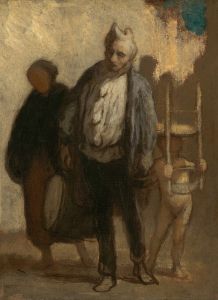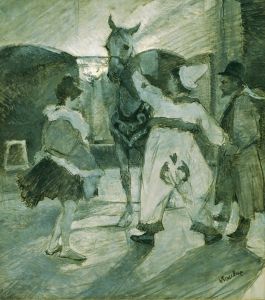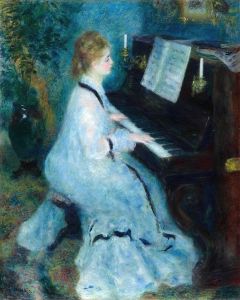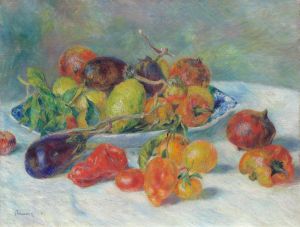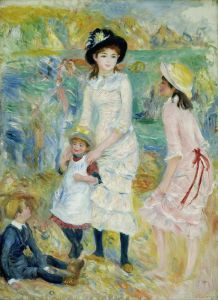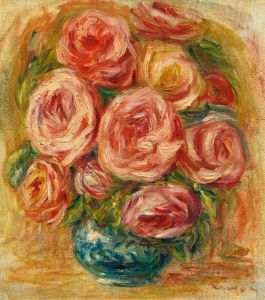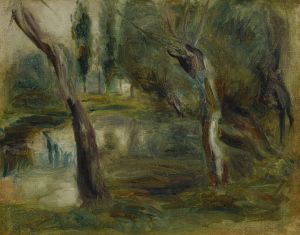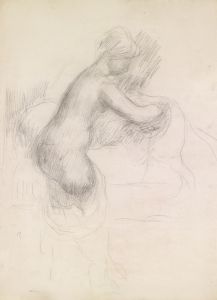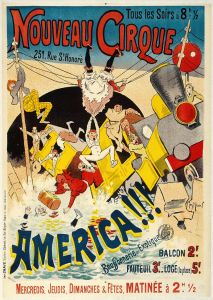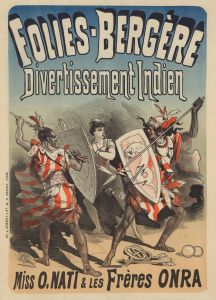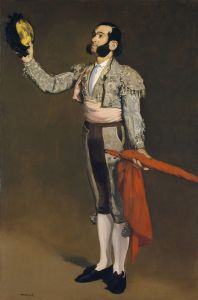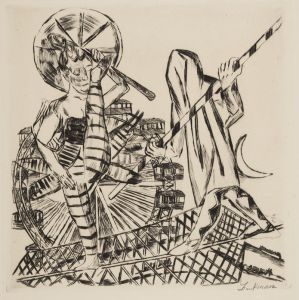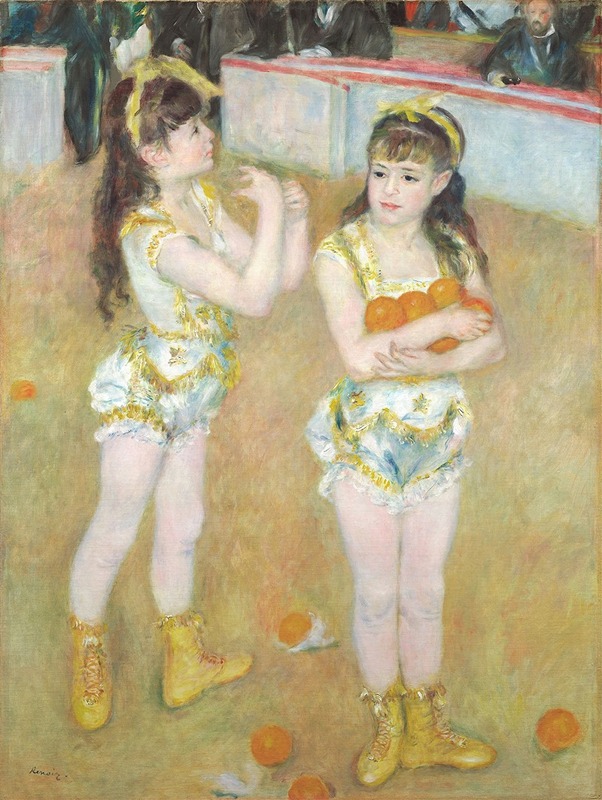
Acrobats at the Cirque Fernando
A hand-painted replica of Pierre-Auguste Renoir’s masterpiece Acrobats at the Cirque Fernando, meticulously crafted by professional artists to capture the true essence of the original. Each piece is created with museum-quality canvas and rare mineral pigments, carefully painted by experienced artists with delicate brushstrokes and rich, layered colors to perfectly recreate the texture of the original artwork. Unlike machine-printed reproductions, this hand-painted version brings the painting to life, infused with the artist’s emotions and skill in every stroke. Whether for personal collection or home decoration, it instantly elevates the artistic atmosphere of any space.
"Acrobats at the Cirque Fernando" is a painting created by the French Impressionist artist Pierre-Auguste Renoir in 1879. The artwork is also known by its French title, Les Acrobates au Cirque Fernando. It depicts a scene from the Cirque Fernando, a popular circus located in the Montmartre district of Paris during the late 19th century. The painting is an example of Renoir's interest in capturing contemporary life and entertainment in Paris, a theme that was central to the Impressionist movement.
The composition features two young acrobats, a boy and a girl, who are likely siblings, resting after a performance. The girl, dressed in a white leotard with a pink sash, sits on a bench with her hands folded in her lap, gazing directly at the viewer. The boy, wearing a striped costume, stands beside her, holding a hoop. The background is sparse, with only a hint of the circus setting, which draws attention to the figures and their expressions. Renoir's use of soft brushstrokes and a light color palette imbues the scene with a sense of intimacy and tenderness, contrasting with the lively and often chaotic atmosphere typically associated with the circus.
The painting reflects Renoir's skill in portraying human figures and his ability to convey mood and emotion through subtle details. The expressions of the children suggest a mix of weariness and contemplation, offering a glimpse into the lives of young performers in 19th-century Paris. Renoir's focus on the acrobats as individuals, rather than as part of a larger spectacle, aligns with the Impressionist interest in capturing personal and fleeting moments.
"Acrobats at the Cirque Fernando" is housed in the Art Institute of Chicago, where it remains a significant example of Renoir's work during the late 1870s. This period marked a time when Renoir was deeply engaged with the Impressionist movement, experimenting with light, color, and modern subjects. The painting is often noted for its combination of realism and Impressionist techniques, showcasing Renoir's ability to balance detailed figure work with the loose, vibrant style characteristic of the movement.
The Cirque Fernando itself was a notable venue in Paris, attracting artists such as Renoir, Edgar Degas, and Henri de Toulouse-Lautrec, who found inspiration in its performers and lively atmosphere. Renoir's painting serves as both a representation of this cultural institution and a broader reflection of the role of entertainment in Parisian society during the late 19th century.





